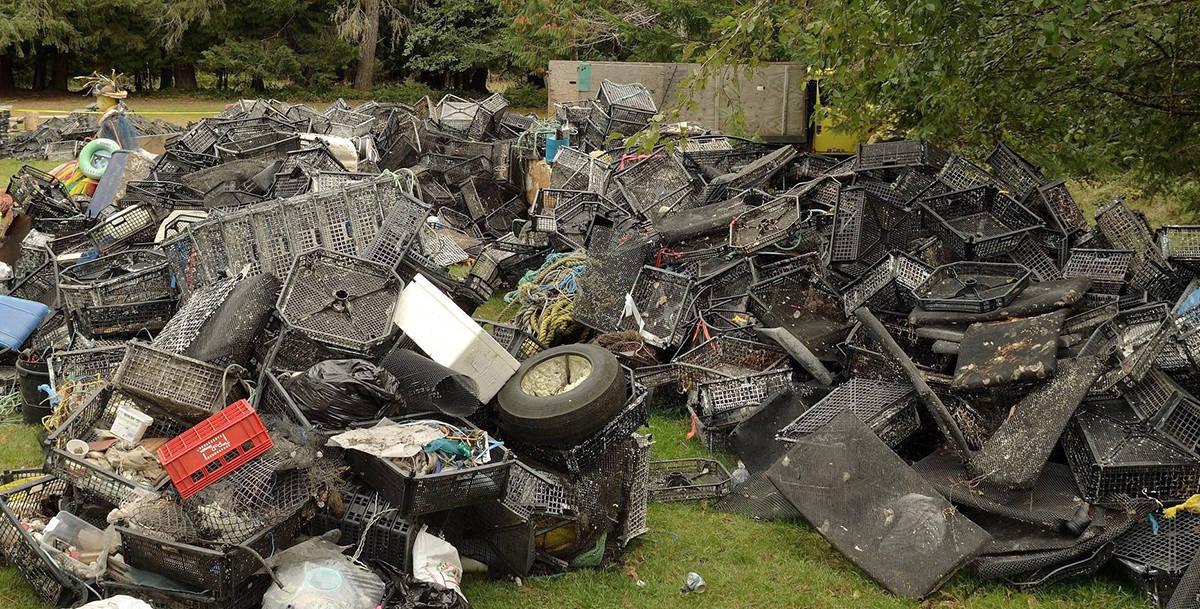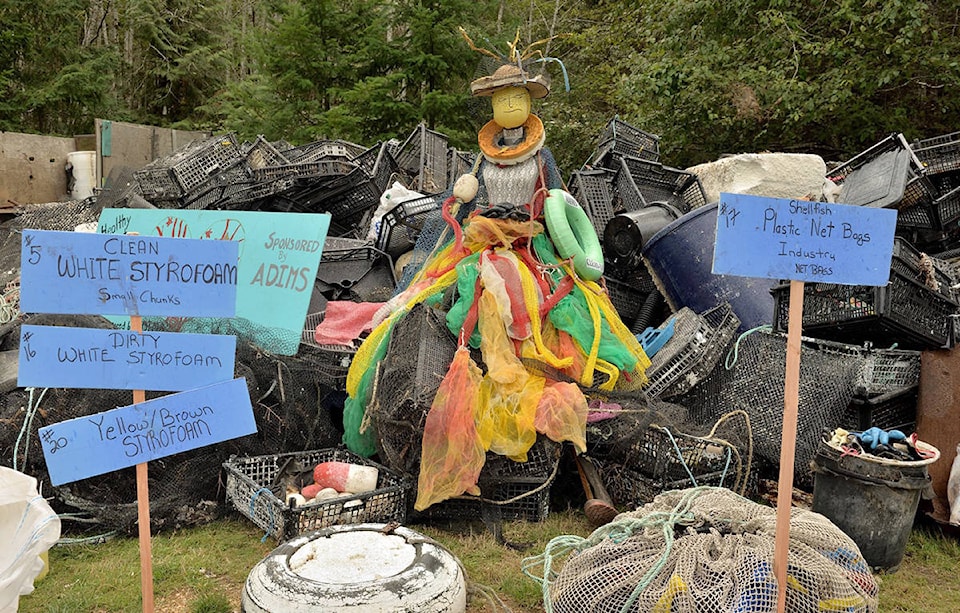For the last 15 years, Denman Islanders have been hitting the beach to clean up debris.
More recently, a lot of what has been showing up is detritus from aquaculture, particularly from the growing shellfish industry in the region.
“The industry needs a system…. They need to go and get their plastic,” said Association of Denman Island Stewards (ADIMS) chair Dorrie Woodward. “It’s not for volunteers ultimately to solve this problem.”
Organizers from ADIMS estimate they collected between eight and nine tonnes of junk from the beach – a 30-per-cent increase over the amount from 2018 – during the latest cleanup.
The main cleanup day was Sept. 28, which attracted about 65 people, but work started in the days leading up to the event. In all, including schoolchildren and organizations like BC Ferries and its CEO Mark Collins, about 150 people took part in the effort on Denman.
RELATED STORY: Ferries employees participating in Denman Island cleanup for plastic-shedding ferry
Woodward said, after an invite a few years back, representatives from Fisheries and Oceans Canada (DFO) and the BC Shellfish Growers Association (BCSGA) started helping cleaning up the beach on the Vancouver Island shore of Baynes Sound.
“This is the third year that BCSGA … and DFO have joined us in doing the cleanup,” she said. “They have organized cleanups on the other side.”
Darlene Winterburn, BCSGA executive director, confirmed the industry took part in the Big Beach Cleanup.
“Farmers in the Deep Bay area led a cleanup effort in their area and another group of farmers walked from the Goose Spit to Point Holmes to collect debris. The BCSGA led formal beach cleanups on Tuesday and Wednesday; over 100 volunteers walked beaches from the edge of Courtenay down to Fanny Bay Oysters,” she said via email.
Other volunteers accessed drop-off areas to bring debris to a sorting area, while aquaculture farmers on Denman focused on their own sites, Winterburn said. As of Monday, groups of farmers were moving debris collected on Denman over this last year to Vancouver Island for disposal and recycling. The BCSGA also leased a grinding machine to crush the plastic trays to take up less room on trucks hauling plastic to be recycled at Ocean Legacy.
While the organizers appreciate the help from the BCSGA and shellfish farmers, they feel it should really be up to the industry to clean up its own mess.
“It’s long past time for Fisheries and Oceans, the regulator, and the shellfish growing industry itself, to take responsibility for labelling, securing and controlling aquaculture gear and equipment on and off tenures and rafts,” cleanup organizer Liz Johnston said in a news release.
The problem of plastic debris has gotten worse in recent years, Woodward said, because of changes in the market, or what she calls the “gentrification” of the industry. For example, the industry started growing oysters on the half shell in plastic baskets.
“Every bar had to have its half-shell oyster, and that’s a much more complicated thing,” says Woodward. “A lot of it involves plastic.”
These baskets are submerged constantly and all too often break loose or are swept away, ending up on the shores of places like Denman Island, along with other plastic equipment.
If one thing has gotten easier in recent years for groups like ADIMS, it’s that they are no longer on the fringe when it comes to concerns about plastic ending up in the ocean.
“A lot of the time, issues about plastic coming ashore and everything were like non-issues,” Woodward said. “We were a voice in the wilderness…. Now, we’re kind of in the middle of what’s more accepted, and we like it.”
mike.chouinard@comoxvalleyrecord.com
Like us on Facebook and follow us on Twitter.

